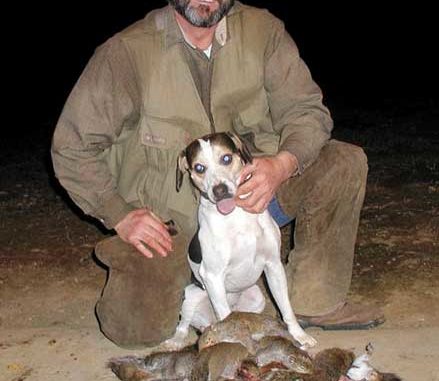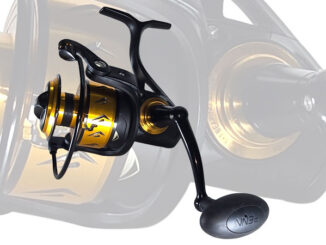
One advantage I had growing up out on the rural route was an early introduction to hunting. I was blessed with a dad who hunted and who saw the advantages of introducing his two sons to the sport not long after we were out of diapers.
My first memories of the hunting experience were of following Dad through an oak glade on a chilly October morning, trying as best I could to follow his whispered instructions.
“Watch where you step. You’re making too much racket. Let’s sit on this log and see if you can keep from wiggling around so much. See that bird moving the end of that limb? That’s not a bird; it’s a squirrel.”
As I grew older, I was allowed to carry a gun and hunt alone, but the lessons I learned from my dad during those early years of watching him paid off as I was eventually able to become a successful squirrel hunter.
In reflection, the behavior of George Seacrist’s two dogs, Bailey and Rascal, reminded me a bit of those early days of learning how to squirrel hunt by watching my dad.
Bailey was a miniature dachshund; Rascal, a long-legged rat terrier. Bailey looked like anything but a squirrel dog, while Rascal had all the markings of a squirrel-treeing machine. It was Bailey, however, who taught the younger Rascal what it was all about.
“When we moved to Ruston in 1993, we got Bailey as a pet for our daughter. Then I began to notice how he would watch the squirrels at our bird feeders and how they got him excited,” said Seacrist, 51, who works as operations manager for Tellus Operating Group in the oil-and-gas industry.
“I’d take him out in the yard, and observed how he loved to chase squirrels up trees, and then a light came on in my head. I wondered if it would be possible to teach a miniature dachshund to tree squirrels. I’d leave him in the house while I dragged a squirrel tail around the yard, placing it in the fork of a tree. Then I’d let Bailey out and he’d follow the scent trail to the tree where I’d placed the squirrel tail.”
It wasn’t long before Seacrist began taking Bailey to the woods with him, and he eventually began treeing squirrels. All his work had paid off because he now had a unique little squirrel-treeing machine.
“Because her legs were so short, I’d stick her in my hunting vest when she got tired. One advantage to hunting with her was that she never ventured too far from me; her short little legs wouldn’t allow her to range too far,” Seacrist said.
With his newfound sport of hunting squirrels with a dog becoming more ingrained, Seacrist decided he needed a real squirrel dog, one that came from a good blood line with inborn squirrel treeing instincts. Thus, he found and purchased Rascal.
“I’d take the two dogs to the woods with me, and Rascal would watch Bailey, eventually learning what it was all about. I may get credit for having a good squirrel dog in Rascal, but truth to tell, he was trained by a little dachshund named Bailey.”
Tragedy struck soon after the two became bonded in the squirrel woods when Bailey was killed by a car in front of the family home. Seacrist has since installed an electronic barrier around his yard to keep his dogs from venturing into harm’s way.
“After we lost Bailey, and I was impressed with the way Rascal had learned to hunt, I decided I needed another dog of the same blood line to keep the good genes going, so I agreed to breed Rascal to another dog with squirrel hunting heritage in her blood. I was given the pick of the litter, and now have two squirrel dogs, Rascal and his daughter, Dottie,” Seacrist said.
As excited as he was to have the daughter of Rascal as a hunting companion, Seacrist became disheartened when he found out that Dottie was gun-shy.
“The first time I took her out and shot a squirrel, Dottie tucked her tail and took off,” he said. “Somebody told me that I would be better off getting rid of her because she’ll be gun-shy all her life, worthless as a squirrel dog.”
However, Seacrist knew what he had in Dottie’s blood line, and he was reluctant to give up on her.
“I was surfing the Web one day looking for ways to help gun-shy dogs, and I found a product that looked promising, so I bought it,” he said. “It consisted of a set of CDs that you play in the dog’s presence. The first one starts out with soft music and an occasional report of gunfire in the background. As you work your way through each CD, the music gradually gets softer and the gunfire louder. Dottie eventually became accustomed to the sound, and when I’d play a CD, I would pick up my shotgun and walk around Dottie so she could see it. I would place the shotgun within inches of the ‘doggie door’ where she would have to see it and smell it each time she came into the house.”
Dottie’s test under fire in the squirrel woods would come one day when Seacrist called me and asked that I accompany him and Dottie on a short squirrel hunt.
“Bring your .22 rifle,” Seacrist instructed, believing that the soft report of the .22 wouldn’t spook the pup as badly as would a shotgun.
Dottie was excited about being in the woods, and she soon smelled fresh scent of a squirrel, tracing it to a tree. Fortunately, we spotted the squirrel sticking to a limb. Seacrist fastened a leash on Dottie’s collar, and I shot the squirrel. I glanced at Dottie, and she was shaking like a leaf, until Seacrist pointed the dead squirrel out to her. Still on her leash, she ran to it, grabbed it and gave it a good shake.
Click here to read the rest of this story, which first appeared in the January 2008 issue of Louisiana Sportsman. Subscribe to ensure you don’t miss a single information-packed issue, or download individual digital editions right to your computer or smart phone.


